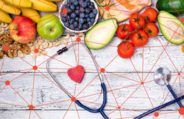The environmental footprint of global supply chains has been top of mind this year, especially during COP 26 and amid supply chain disruptions around the world.
But what about the handprints?
We’ve all heard of environmental “footprints” – a carbon footprint or water footprint. But millions of people - connected across countries and continents – contribute to the raw materials, processing, transport, production and packaging behind global brands. It’s their “handprints” and hard work that are part of the products we all enjoy.
So, who are they? Where are they? And how are we connected?
We set out to take an objective look at the steps in two global supply chains through the people who are working in them. Tamara Rosenfeld, an acclaimed producer of Netflix's Original Series Street Food, followed mint and rice from farms in India to families in the UK. These short films feature the farmers, freight drivers, people working in supplier factories and in Mars factories who make two of our most iconic brands possible —Extra® and Ben’s Original™.
The world we want tomorrow starts with how we do business today. Understanding our supply chains and who works across them is a foundational step to creating a world where everyone can thrive and the planet is healthy.
See for yourself in these films and learn more here:
*Filmed prior to the pandemic.
*Filmed prior to the pandemic.
- In the mint supply chain, the Shubh Mint program has increased farmers’ income from mint by 200% while reducing unsustainable water use by 50%. As we look to the next five years of this work, we’re focused on supporting women’s leadership, access to capital and skills.
- In rice supply chains, Mars is an active member of the Sustainable Rice Platform (SRP) – a global alliance working to promote eco-friendly rice farming, empower small farmers and reduce the environmental footprint of rice. We’re working with partners like the Sustainable Rice Platform (SRP) and the International Rice Research Institute to improve conditions for smallholder rice farmers.
- We’re investing in traceability tools to map supply chains, understand and improve working conditions across them. Our Next Gen Supplier and origin programs are designed to do just that.






47a6.jpg?h=a970f492&itok=cr3jz0Fd)

%20(credit%20tim%20lamont%2c%20university%20of%20exeter)eb66.jpg?itok=fxuybik3)

